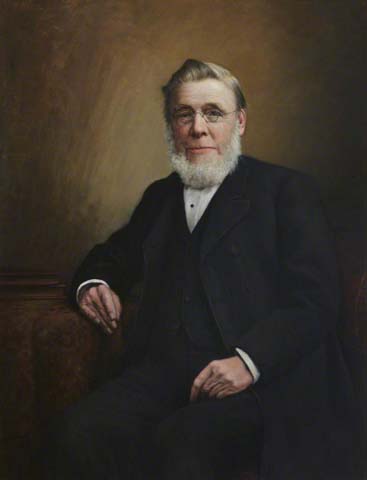

تاريخ الرياضيات

الاعداد و نظريتها

تاريخ التحليل

تار يخ الجبر

الهندسة و التبلوجي


الرياضيات في الحضارات المختلفة

العربية

اليونانية

البابلية

الصينية

المايا

المصرية

الهندية


الرياضيات المتقطعة

المنطق

اسس الرياضيات

فلسفة الرياضيات

مواضيع عامة في المنطق


الجبر

الجبر الخطي

الجبر المجرد

الجبر البولياني

مواضيع عامة في الجبر

الضبابية

نظرية المجموعات

نظرية الزمر

نظرية الحلقات والحقول

نظرية الاعداد

نظرية الفئات

حساب المتجهات

المتتاليات-المتسلسلات

المصفوفات و نظريتها

المثلثات


الهندسة

الهندسة المستوية

الهندسة غير المستوية

مواضيع عامة في الهندسة

التفاضل و التكامل


المعادلات التفاضلية و التكاملية

معادلات تفاضلية

معادلات تكاملية

مواضيع عامة في المعادلات


التحليل

التحليل العددي

التحليل العقدي

التحليل الدالي

مواضيع عامة في التحليل

التحليل الحقيقي

التبلوجيا

نظرية الالعاب

الاحتمالات و الاحصاء

نظرية التحكم

بحوث العمليات

نظرية الكم

الشفرات

الرياضيات التطبيقية

نظريات ومبرهنات


علماء الرياضيات

500AD

500-1499

1000to1499

1500to1599

1600to1649

1650to1699

1700to1749

1750to1779

1780to1799

1800to1819

1820to1829

1830to1839

1840to1849

1850to1859

1860to1864

1865to1869

1870to1874

1875to1879

1880to1884

1885to1889

1890to1894

1895to1899

1900to1904

1905to1909

1910to1914

1915to1919

1920to1924

1925to1929

1930to1939

1940to the present

علماء الرياضيات

الرياضيات في العلوم الاخرى

بحوث و اطاريح جامعية

هل تعلم

طرائق التدريس

الرياضيات العامة

نظرية البيان
Edward Sang
المؤلف:
A R Davidson
المصدر:
The History of the Faculty of Advocates in Scotland 1856-1956
الجزء والصفحة:
...
20-10-2016
591
Died: 23 December 1890

Edward Sang, mathematician, engineer and actuary, was the 6th of 11 children of Edward Sang (1771-1862), nurseryman and sometime Provost of Kirkcaldy, and his wife Jean Nicol (b.1773) a relative of William Nicol (b.1770) who invented the Nicol prism. He attended a subscription school, founded by his father and others, under a gifted headmaster Edward Irving. At Edinburgh University during 1818 - 1824, he impressed professors William Wallace and John Leslie in mathematics and natural philosophy, despite periods of illness. Small for his age, he was first mocked by fellow-students, then admired for his precocious talent.
Sang first worked in Edinburgh as surveyor, civil engineer and mathematics teacher and lectured on natural philosophy. During 1841-43 he was Professor of Mechanical Sciences at the nonconformist Manchester New College, then went to Constantinople to establish engineering schools, plan railways and an ironworks. He lectured (in Turkish) at the Imperial School, Muhendis-hana Berii and gained fame by predicting the solar eclipse of 1847, thereby dispelling superstition. He resigned against the Sultan's wishes, returning to Edinburgh in 1854 to teach mathematics.
An active Fellow of the Royal Scottish Society of Arts and the Royal Society of Edinburgh, he received awards from both and from the Institution of Civil Engineers, London (1879). He was a founder member and first official lecturer of the Faculty of Actuaries in Scotland, a corresponding member of the Royal Tunis Academy, an Ll.D. of Edinburgh University and an honorary member of the Franklin Institute, Philadelphia. He married Isabella Elmslie in 1832 and had at least three daughters and at least one son.
Mainly in Edinburgh-based journals, Sang wrote extensively on mathematical, mechanical, optical and actuarial topics including vibration of wires, a theory of toothed wheels, an improved lighthouse light, railways, bridges, manufacturing and life insurance. He published actuarial, annuity and astronomical tables, books on Elementary and Higher Arithmetic and much-used tables of 7-place logarithms (1871). But his most remarkable achievement is his massive unpublished compilation of 26- and 15-place logarithmic, trigonometric and astronomical tables, filling 47 manuscript volumes. Compiled over forty years, latterly with assistance from two daughters Flora and Jane, these perhaps surpass in accuracy the (also unpublished) French 'Cadastre' tables of 1801. They were gifted to the nation in 1907 by Anna and Flora Sang.
Books:
- A R Davidson, The History of the Faculty of Advocates in Scotland 1856-1956 (1956).
Articles:
- Anon. (possibly C G Knott), Dr Edward Sang's Logarithmic, Trigonometrical, and Astronomical Tables, Proceedings of the Royal Society of Edinburgh (1907-8), 183-196.
- D Bruce Peebles, Edward Sang (with list of writings), Proceedings of the Royal Society of Edinburgh (Obituary Notices), 21 (1897), xvii-xxxii.
- A D D Craik, Edward Sang (1805-1890): calculator extraordinary. British Soc. for the History of Mathematics Newsletter 45 (Spring 2002), 32-45.
- A D D Craik, The logarithmic tables of Edward Sang and his daughters . Historia Mathematica 30 (2003), 47-84 .
- Edward Sang MSS and related papers, The National Library of Scotland, Edinburgh, Acc. 10780. (89 volumes/items of tables, correspondence etc., previously held by the Royal Society of Edinburgh).
- Edward Sang MSS, Edinburgh University Library 40 vols. Gen. 310-349.
- C G Knott, Edward Sang and his logarithmic calculations, in C G Knott (ed.), Napier Tercentenary Memorial Volume (1915), 261-268.
- Microfiche Index of Old Parish Records (Scotland).
- W Swan, Presidential Address for 1882, Transactions of the Royal Scottish Society of Arts XI (1887), 1-7.
- The Royal Society Catalogue of Scientific Papers 1800-1900.
- C D Waterston, Notes on portraits in oils, busts and statuettes, the property of the Royal Society of Edinburgh, displayed in the rooms of the Society, The Royal Society of Edinburgh Yearbook (1994), 83-117.
 الاكثر قراءة في 1800to1819
الاكثر قراءة في 1800to1819
 اخر الاخبار
اخر الاخبار
اخبار العتبة العباسية المقدسة

الآخبار الصحية















 قسم الشؤون الفكرية يصدر كتاباً يوثق تاريخ السدانة في العتبة العباسية المقدسة
قسم الشؤون الفكرية يصدر كتاباً يوثق تاريخ السدانة في العتبة العباسية المقدسة "المهمة".. إصدار قصصي يوثّق القصص الفائزة في مسابقة فتوى الدفاع المقدسة للقصة القصيرة
"المهمة".. إصدار قصصي يوثّق القصص الفائزة في مسابقة فتوى الدفاع المقدسة للقصة القصيرة (نوافذ).. إصدار أدبي يوثق القصص الفائزة في مسابقة الإمام العسكري (عليه السلام)
(نوافذ).. إصدار أدبي يوثق القصص الفائزة في مسابقة الإمام العسكري (عليه السلام)


















